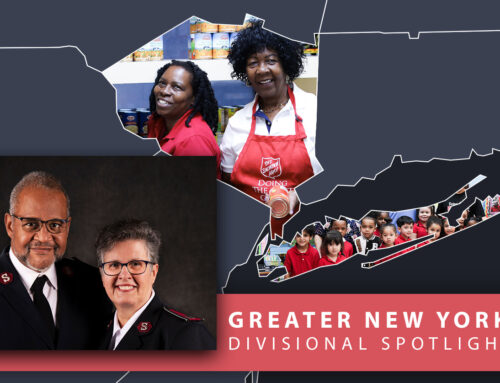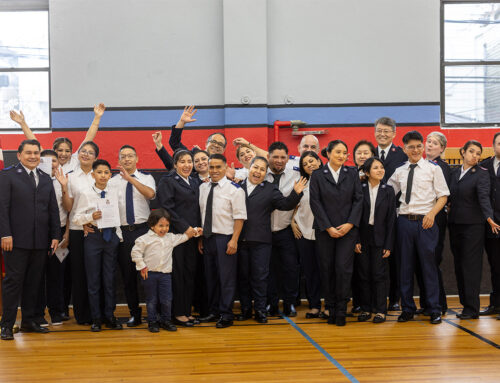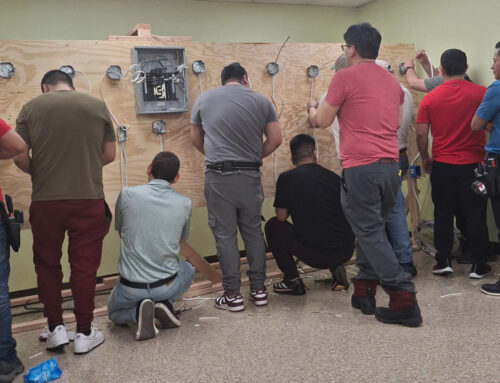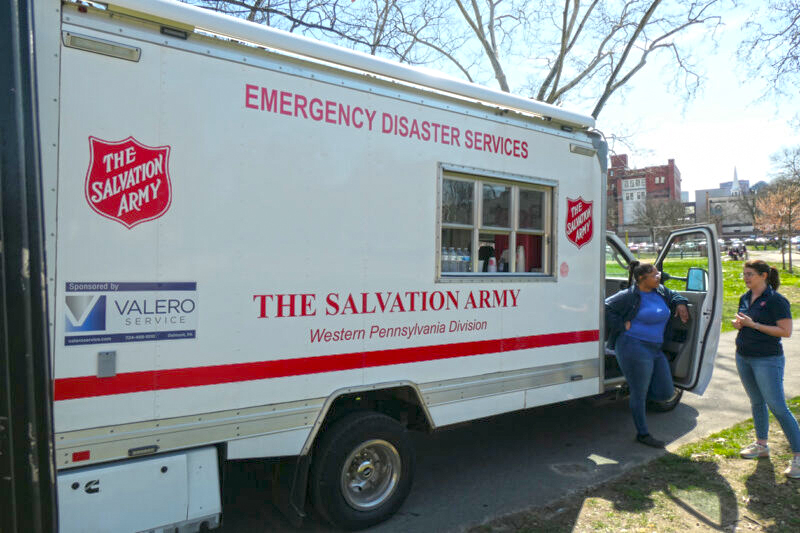
The Army at the Scene: Pittsburgh
by Hugo Bravo
The Salvation Army Western Pennsylvania Division Emergency Disaster Services responds to all different types of happenings in Pittsburgh and surrounding communities, but on Tuesdays, their focus is making sure people have a hot meal to enjoy. On my first trip to the Steel City, I visited The Salvation Army’s warehouse to meet the volunteers who make this ministry possible.
Heather Martin, deputy director of operations and volunteer coordinator for the Army in western Pennsylvania, was hired two years ago. She became determined to bring back EDS’s outdoor feeding program, which had stopped because of COVID-19 and a lack of staff. These feedings were separate from the indoor soup kitchens that Salvation Army corps are known for. With a canteen, the Army could go right into places where people needed help the most.
“The trust between The Salvation Army and the unhoused community really had to get to the point it is now to better serve them,” Heather explained. “Today, we’re able to really connect with them; first with food, and then with resources.”
Heather and a team of volunteers were up early inside the warehouse kitchen to prepare trays of chicken stir-fry with rice and vegetables. Though cooking has never been a strength of mine, I was happy to pick up a knife to cut chicken and help get the vegetables properly stirred and fried.
With aluminum trays full of food and bags of brownie bites for dessert, the EDS canteen made its way to Pittsburgh’s South Side to begin its work.
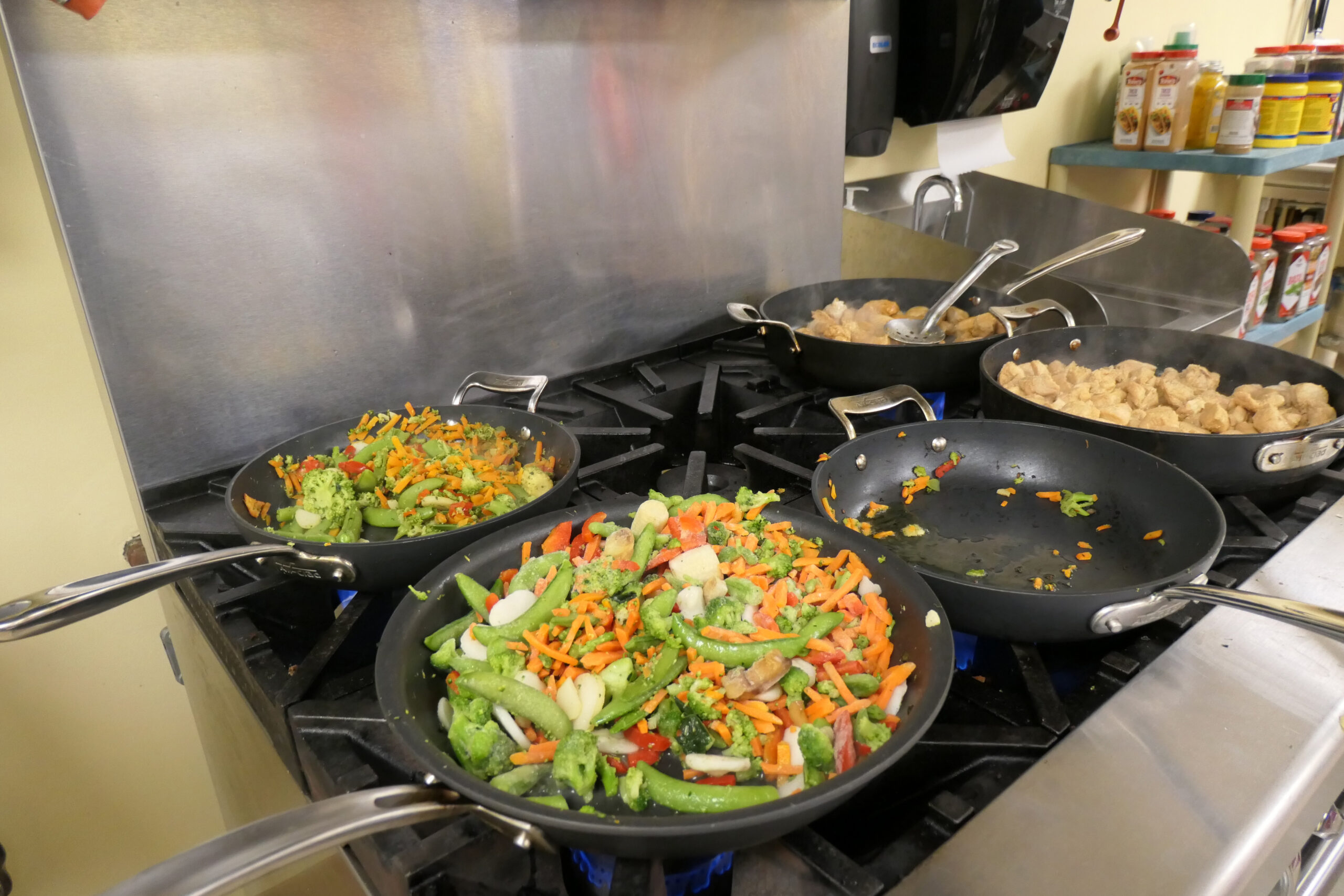
The day took us to two locations: an encampment underneath a railroad bridge on the South Side, followed by Allegheny Commons, a municipal park surrounding the neighborhood of Allegheny Center on the North Side. Though encampments around Pittsburgh pop up and close without notice, the park is a consistent location for the unhoused. The canteen arrives for lunch there every week, with groups usually gathered waiting, excited to see what’s on the menu. Everyone who came up to the canteen, whether for a full meal or simply a bottle of water, was grateful for the Army’s presence.
“Depending on the weather, we can get over 100 people in just a few hours,” says Heather. “Many of them are regulars; we know them by name, and when they’re going to need an extra plate of food for their families.”
Elena Chaffin, outreach coordinator for the LIGHT Project, was also on the scene with information about The Salvation Army’s ministry to raise awareness and provide support to men and women who have survived labor or sex trafficking.
“It’s wonderful to give a hungry person a meal, but the biggest reward is when we have someone like Elena to help us take an active step towards directly improving the situation of someone we just fed,” says Heather. “That’s exactly what William Booth wanted The Salvation Army to be.”
The long view
As the lunch hours began to wind down, I spoke to Gregg Duane, a trained disaster services volunteer serving from the canteen. Gregg had come to The Salvation Army through Heather’s initiative to restart Tuesday’s EDS food distribution. A former schoolteacher, he knew the city and its layout well. Having family who had suffered through some of the same situations as the people we had just served, Gregg was also aware of the difficulties the unhoused face in Pittsburgh.
“We like to say houseless, or unhoused, because homeless isn’t accurate anymore. When someone is trying to find shelter, what they need is housing,” Gregg explains. “Many of these folks get arrested because the housing they find is seen as trespassing. Now, there are movements to focus more on finding them help for their mental health rather than immediately getting them caught up in the legal system.”
Gregg also stresses that true recovery is not a one-day or even a one-month process. Support must be given afterward to folks who need it, especially to monitor addiction or sudden relapses. In Pittsburgh, says Gregg, addiction facilities are more available than housing facilities.
“So what is an unhoused individual who isn’t addicted to anything going to do? Eventually, they’re going to consider addiction just to get housing.”
Both Heather and Gregg say they are looking forward to seeing the EDS canteen ministry grow through expanded social services like the LIGHT Project, or even an extra day feeding the community. Gregg would even like to see information given out beyond a piece of paper that can get easily misplaced or accidentally thrown away. Having seen a woman with almost a dozen rubber wristbands enjoy a plate of stir-fry just moments ago, I suggest wristbands with important addresses or phone numbers on them. Gregg agrees that something like that would be quick and simple to give away, and less likely to get lost or damaged by the weather.
“Resources working together is the key to providing long-term help,” says Gregg. “That’s the city working with us, the homeless facilities, the social services, the voucher systems, and even transportation.”
Of course, Gregg is correct. The Salvation Army’s EDS ministry that same day is proof that resources and people working together can make a real difference.

